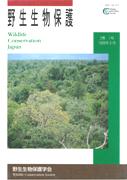Volume 2, Issue 1
Displaying 1-4 of 4 articles from this issue
- |<
- <
- 1
- >
- >|
Original Papers
-
Article type: Original Papers
1996 Volume 2 Issue 1 Pages 1-15
Published: 1996
Released on J-STAGE: September 14, 2017
Download PDF (1367K) -
Article type: Original Papers
1996 Volume 2 Issue 1 Pages 17-21
Published: 1996
Released on J-STAGE: September 14, 2017
Download PDF (393K) -
Article type: Original Papers
1996 Volume 2 Issue 1 Pages 23-35
Published: 1996
Released on J-STAGE: September 14, 2017
Download PDF (915K)
Essay and Opinion
-
Article type: Essay and Opinion
1996 Volume 2 Issue 1 Pages 37-46
Published: 1996
Released on J-STAGE: September 14, 2017
Download PDF (916K)
- |<
- <
- 1
- >
- >|
